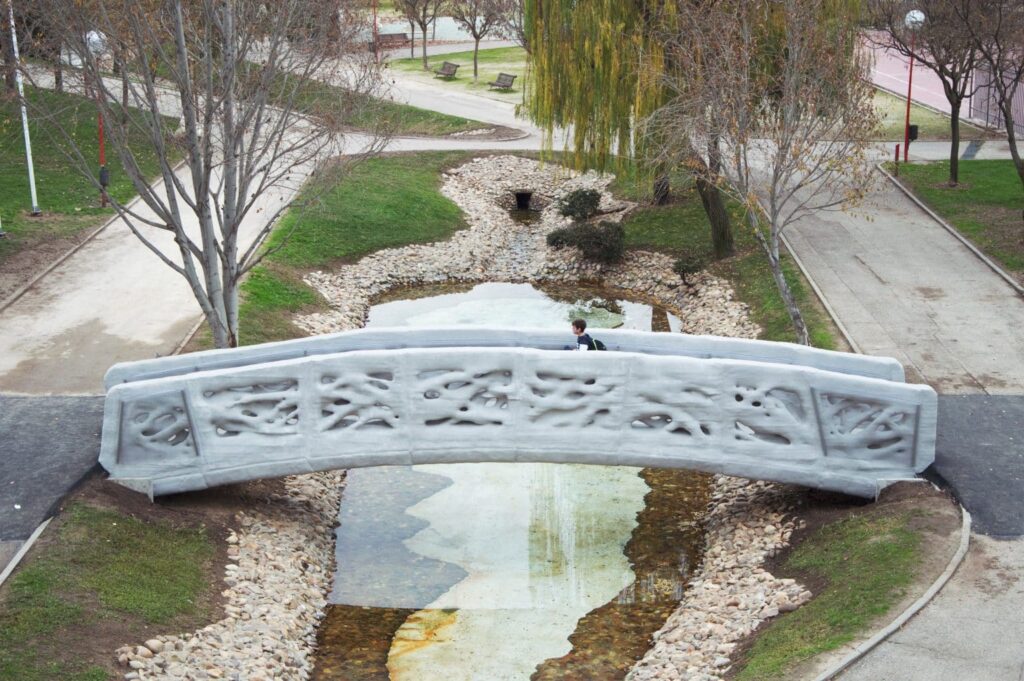3D printing technology has been used to create a footbridge in a park in Madrid, Spain. The project, known as the “Cybertopia” bridge, was designed by architecture firm Arup and engineered by engineering firm Acciona. The bridge was printed using a giant 3D printer and was made of a composite material made of recycled plastic and natural fibers.
The 3D printing process took around six months to complete and resulted in a unique design that features a series of interconnected hexagonal shapes, which provide structural stability and support. The bridge was also designed to be sustainable and environmentally friendly, as the materials used were recycled and the manufacturing process used less energy compared to traditional methods.
The bridge was officially opened in 2019 and is available for visitors to use. It is the first of its kind in Spain, and it is a proof of concept for the use of 3D printing technology in the construction industry.
3D printing technology in construction is still in its early stages, but it has the potential to revolutionize the way we build structures, by allowing for faster and more efficient construction, customizable designs, and the use of sustainable materials. However, there is still a need for more research and development to improve the structural integrity, cost-effectiveness and safety of the 3D printed structures.




